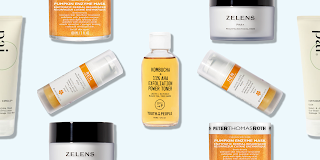How to Start Your Skin Cycling Journey (and Which Products to Use)
If you're a TikTok addict like me or undeniably spend a little too much time on the popular app then you've probably come across the new viral "skin cycling" trend. After all it has been seen as a big hit amongst influencers in the beauty and lifestyle industry. However, what is so different and great about this new skincare routine trend compared to others? Well, this one stemmed from a board-certified dermatologist Whitney Bowe, M.D. herself!
What is Skin Cycling?
So, what precisely does this skincare routine entail? Exfoliants, retinoids, and barrier recovery in our nightly regimens over the course of four days! The intention behind skin cycling is to allow your skin to enjoy and absorb particular products on certain days while also giving it a break on other days. Think of it as a workout routine! You work certain muscles some days while other days you let them rest.
How to Skin Cycle
The technique is quite simple and all about consistency when it comes to adding skin cycling into your daily routine. However, if you're quite new to chemical exfoliants there is no shame in working your way in by starting off with gentle formulas. And remember to always start with a clean face!
Night 1: Exfoliation
 |
| Photo: Elle Magazine |
You've probably tried a variety of exfoliating grooming products at this point in your daily regimen, which essentially removes the dead skin from your face. Although if you're still a bit unsure of the differences between the main exfoliate products then maybe reading these 3 bullet points will give you a better idea as to which exfoliate you'd like to adapt to your day one skin cycling routine!
- Alpha-hydroxy acids (AHAs), help dissolve the bond holding the top layers of dead skin to reveal newer, softer skin
- Beta-hydroxy acids (BHAs), penetrate the top layer of our skin to dissolve excess oil, sebum, and dead skin
- PHAs (polyhydroxy acids) work to more gently exfoliate the top layer of skin more than AHAs can (fantastic alternative for people whose skin is sensitive or reactive or whose skin doesn't react well to AHAs or BHAs)
Night 2: Retinoid
 |
| Photo: Get The Gloss |
Now, this step is very important and I am saying this based on experience! Especially if you're new to utilizing retinoids because they can be quite strong and drying. Hence, I would personally suggest (after washing your face of course) to first put on a light layer of moisturizer to your skin, then apply your retinoid, and at last apply your second layer of moisturizer.
By doing this, you can help avoid adverse implications like irritability and dry, flaky skin.
Now you might be wondering "well which retinoid should I try? I've seen so many!" Well.
- Retinol: Most common Vitamin A used in over-the-counter retinoids
- Retinal: Also referred to as retinaldehyde and offers more than Vitamin A! My personal suggestion for those that have not seen any results from retinoid yet
- Adapalene: Prescription-strength retinoid! Pretty much the big leagues so I would consider consulting your dermatologist first
Night 3-4: Rest
 |
| Photo: Farmacy Beauty |
The last two nights of your skin cycle regimen must be entirely devoted to nourishing the skin and maintaining the health of your skin barrier, with an emphasis on hydration rather than the use of active treatments. Make sure to search for goods with the following components:
- Colloidal Oatmeal
- Ceramides
- Peptides


Comments
Post a Comment